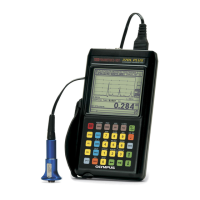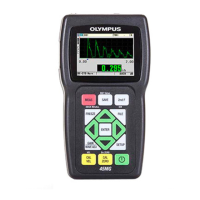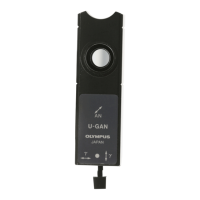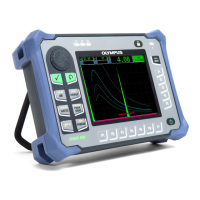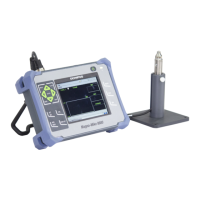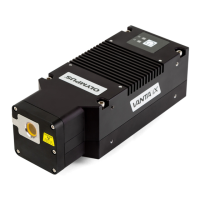DMTA-10009-01EN [U8778346], Rev. D, November 2016
Chapter 5
76
In general, use a thinner couplant such as propylene glycol, glycerin, or water for
smooth material surfaces. Rough surfaces require a more viscous couplant such as gel
or grease. Special couplants are required for high temperature applications.
2. Using moderate to firm pressure, couple the tip of the transducer to the surface of
the test material, and keep the transducer as flat as possible on the material
surface (see Figure 5-9 on page 76).
Figure 5‑9 Coupling dual element transducer and reading the measured thickness
3. Read the measured thickness value for the tested part.
5.4 Saving Data
The 38DL PLUS datalogger is a file based system where one file is opened at a time.
The active file stores a measurement at a thickness measurement location ID. Each
time you press [SAVE/SEND], the displayed value is saved to the active file at the
current ID. The ID is automatically incremented for the next measurement. When you
press [FILE], the name of the active file appears in the ID bar above the menu (see
Figure 5-10 on page 77).

